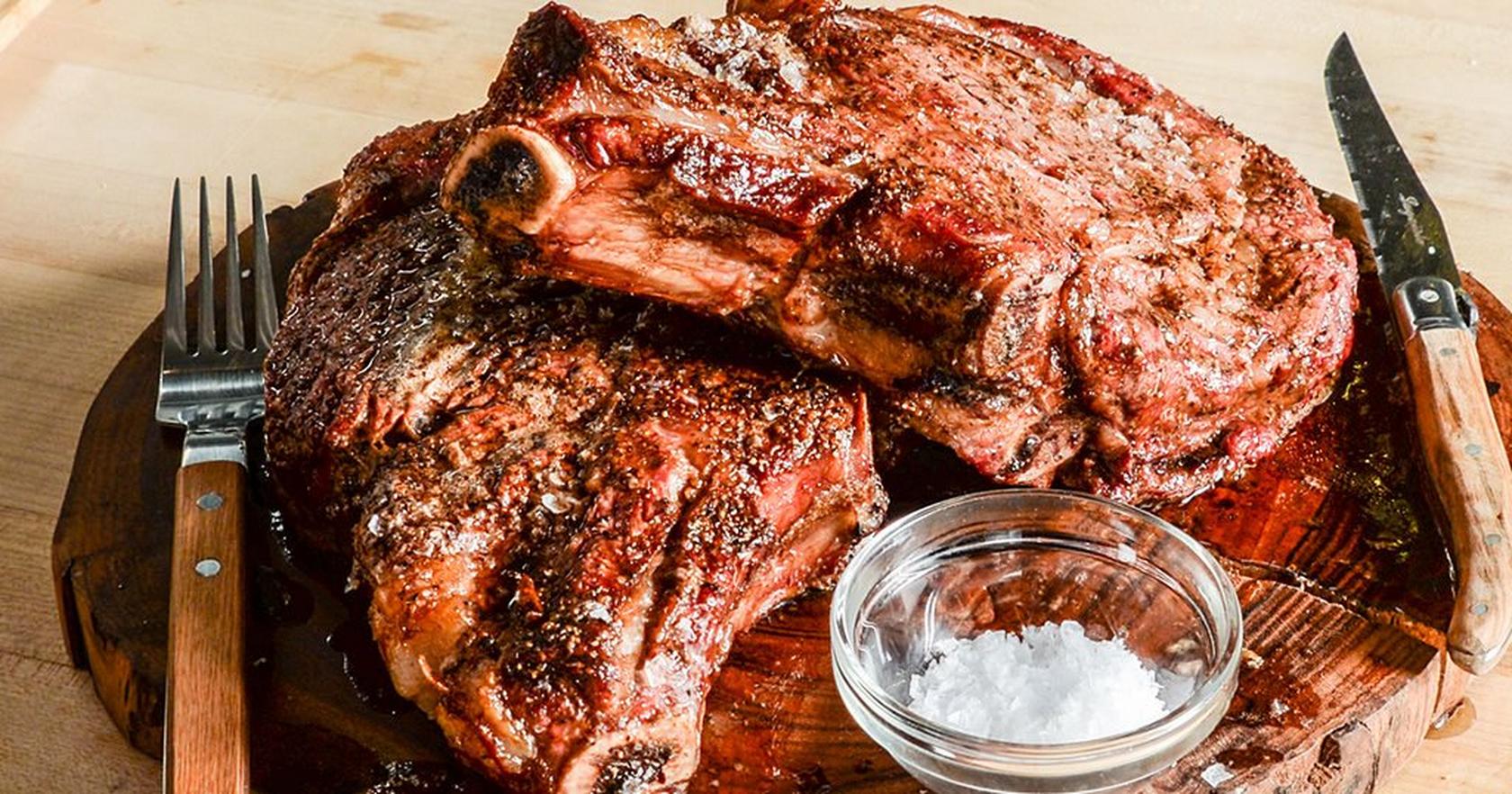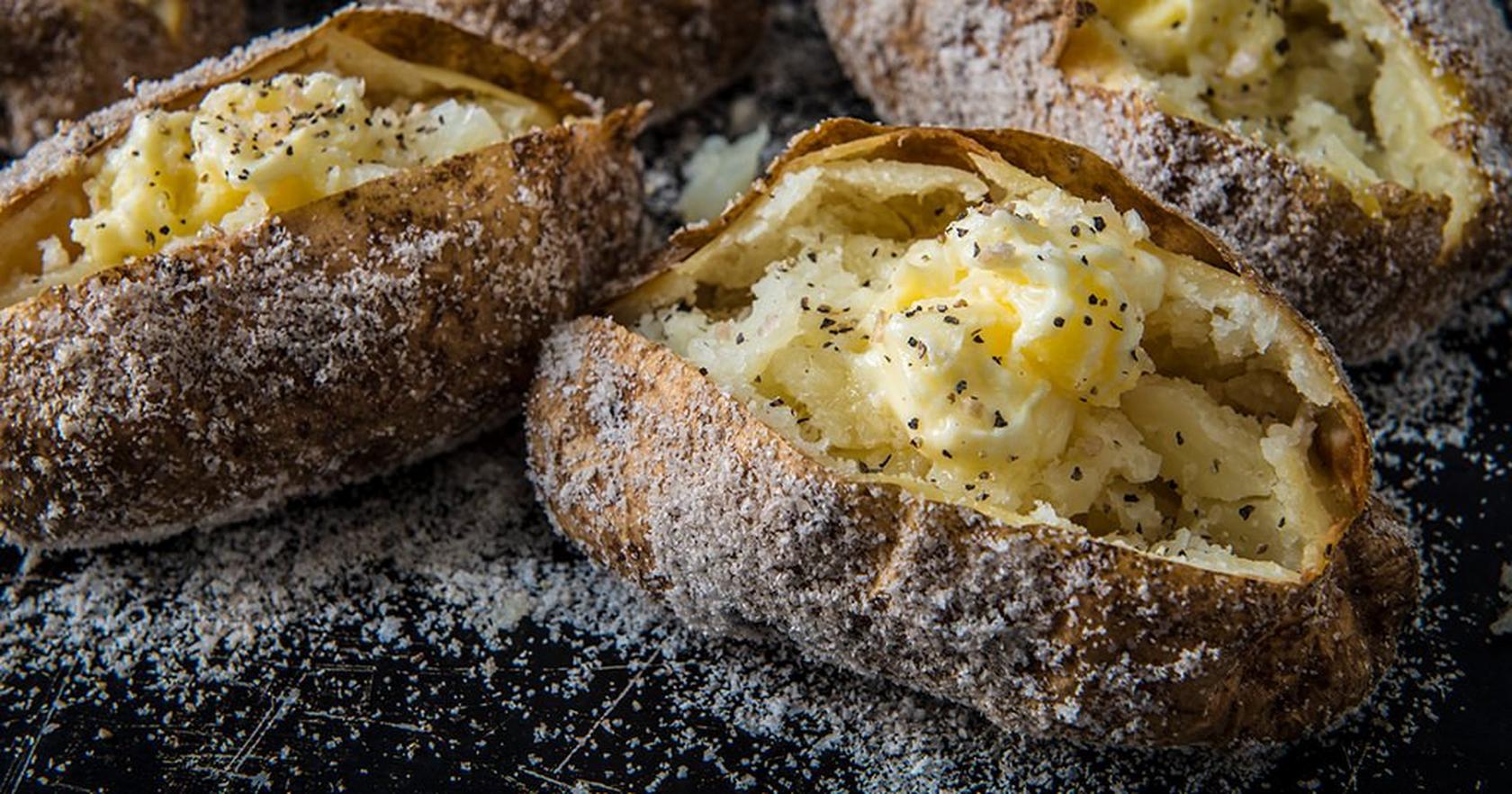
Flavorful, tender, and finely marbled, the ribeye is one of the best steak cuts out there, and learning how to cook ribeye on the griddle is essential.
But this deliciousness comes with a higher price tag as well — so when you buy a ribeye steak, you want to be able to cook it just right. With a few simple steps to prepare and cook your steaks, you’ll be able to get great results on the griddle.
We’ve found that cooking ribeye steaks on the griddle is the best way to get foolproof results. This is why we’re here today: To share our tips, tricks, and methods for how to cook ribeye on the griddle so that you’ll be guaranteed a perfectly cooked ribeye steak every time.
Why Cook Ribeye On Your Griddle?
If you’ve ever had a perfectly cooked ribeye from a restaurant, chances are it was cooked on a flat-top griddle.
And while some grillmasters may put down the idea of cooking a ribeye on a flat surface instead of a grill, a griddle like our Traeger Flatrock has some serious advantages to offer. Those mainly come down to two things: More even heat distribution, and a surface that’s easier to work on.
Heat Distribution
When you’re cooking on a grill, the exact heat distribution all comes down to how you’ve built your fire or how your burners are arranged — meaning that there will likely be hot and cold spots on your cooking surface.
With a griddle, however, the density of metal in the griddling plate will spread all of that heat out evenly. And that means more consistent results while cooking your ribeye since you won’t have to worry about shuffling it around from heat to cold while it cooks. All of this means that you’ll get a more consistent internal temperature, and a more consistent crust on the outside of your steak.
Flat Surface
Until you’ve learned how to cook a ribeye on the griddle, you may not realize just how convenient it is to have a flat cooking surface. This makes it so much easier to position, maneuver, and flip your steaks with just a spatula or tongs, without having to worry about the exact positioning over the grill grates. Overall, this makes it quicker and easier to get a perfectly cooked steak, and easier for you to control the exact temperature that it’s cooked too.
Preparing The Griddle For Cooking Ribeye
Just as with a grill, you’ll have to do a little bit of preparation before your griddle is ready to cook a ribeye. Here’s exactly what you’ll need to know to get a perfectly cooked ribeye steak on the first try.
Preheat The Griddle
A medium to medium-high heat works best for cooking a ribeye on the griddle. That means heating your griddle to somewhere between 325 and 375 degrees, which is the sweet spot where you can control just how fast your steak cooks while also getting a nice sear on it. Any lower, and you’ll miss the seared crust; any higher, and it’ll be hard to control just how done your steak gets.
To Grease or Not to Grease?
Chefs seem to be of two minds on cooking ribeye steaks: Either adding butter liberally or cooking them “dry” — without oil.
Both methods have merits to them, but we find that a little bit of butter or neutral oil goes a long way towards getting a perfectly seared steak on the griddle. And it doesn’t hurt that butter adds even more flavor to an already flavorful cut.
Clarified butter might be the best possible way to go since the proteins that would usually smoke on a hot griddle have been separated from the delicious butter-flavored oil.
But if you only have regular butter or a neutral oil, that will do just fine as well. Spread a thin layer on the griddle before placing your steak, and then add another pat of butter or dollop of oil when you go to turn the steak, too.
Preparing And Cooking The Ribeye On The Griddle

A little bit of preparation will go a long way towards getting a perfectly cooked ribeye on the griddle. Here’s what you’ll need to do to get yourself ready.
Seasoning Your Ribeye
Because ribeye is such a flavorful cut of beef to begin with, it doesn’t need much seasoning. Salt and black pepper is the classic steakhouse seasoning for a ribeye, and when you combine that with butter on the griddle (and a little butter to finish the steak with), it will create a wonderfully seasoned and complex finished flavor.
Don’t be afraid to use plenty of salt here. A big cut of meat like a ribeye steak can take a lot of salt, and that extra bit of salt will also help to create a firmer crust on the steak by drawing water away from its exterior.
If you’re looking to mix it up a bit, you can’t go wrong with our Traeger Beef and Traeger Rub for this premium piece of meat.
How Long To Cook The Ribeye On The Griddle
The exact cooking times for your ribeye will depend on three things: The temperature of your griddle, the thickness of your steak, the recipe you’re following, and your desired level of doneness.
For example, a 1-inch thick steak cooked on medium-high heat, to a rare internal temp, might only take about 10 to 12 minutes. A thicker 1.5 or 2-inch steak cooked to medium well, however, could take up to 20 minutes.
You’ll only really know exactly how long to cook your steak by testing its internal temperature using the MEATER, so let’s take a look at what internal temperatures you’ll need for each level of doneness.
Doneness And Internal Temperature Of Ribeye
Even long-time professional chefs use a meat thermometer to check the doneness of their steaks, and we strongly recommend that you do so as well. Here’s the temperature you should aim for for each level of doneness:
- For rare, aim for 120-130 °F internally.
- For medium-rare, aim for 130-135 °F internally.
- For medium, aim for 135-145 °F internally.
- For medium-well, aim for 145-155 °F internally.
- For well-done, aim for 155-165 °F internally.
To hit each of these levels of doneness just right, you’ll want to pull your steaks off the griddle at about 10 degrees below the listed temperature. That’s because your steak will continue cooking even after it’s off the griddle.
Basting And Resting Your Ribeye
Resting a steak is essential to preserving its flavor, as you need to give time for the cook to finish and all of its juices to be locked in. Consider adding an additional pat of butter right after the steak comes off the griddle, and then give it 10 minutes or more to settle. Then by the time you cut into the steak, it will be perfectly cooked and retain all of its delicious juices.
What To Serve With A Griddled Ribeye
A ribeye steak is great on its own — but it’s even better with a selection of sides. Here are some of our favorites, taken from the Traeger recipe archives:

There's nothing more classic than steak and potatoes. For a savory side, try pairing your ribeye on the griddle with salt-crusted baked potatoes, which are salty and crispy on the outside, and warm and creamy on the inside.
Balsamic Brussels sprouts with bacon are almost hearty enough to be a meal on their own! And while this dish looks phenomenal, it’s really not that hard to make — and it’s a very impressive addition to a ribeye steak dinner.

What’s better than garlic bread? Our ultimate baked garlic bread, with an herbed chili, mayo and butter mixture topped with fresh grated mozzarella and parmesan, baked over applewood smoke for a final touch of savory flavor.
For a tasty side dish that perfectly compliments an exquisite piece of meat like a ribeye, try out smoked mushrooms. This simple side will add a hint of smoke and an earthy depth to your dish.
Last but not least, take your corn on the cob to the next level with our recipe for grilled corn with parmesan and garlic. Freshly shaved parmesan and chopped parsley are the perfect way to turn an ordinary corn cob into an extraordinary side dish.
Ribeye Steak Recipes

Ribeye is such a favorite in the Traeger kitchen that we’ve come up with dozens of ways to cook with it if you want to try out a different method than learning how to cook ribeye on the griddle. Here’s a selection of our favorite ribeye recipes:
- Smoked Chili Rib-Eye Steaks
- Grilled Butter-Basted Ribeye
- Grilled Rib-Eye Shish Kebabs with Chimichurri
- Asian-Style Grilled Rib-Eye Steak
- Reverse Seared Rib-Eye Steaks
- Scheilding Grilled Rib-Eye Steaks
That gives you a whole slew of different cooking methods to try besides griddling, as well as some unique flavors and serving styles to make the best of your ribeye steaks. And with that, you’re completely prepared to cook ribeye on the griddle, or using any other method that you might have available.
Traeger Ribeye
by Doug Scheiding
56 Reviews
Prep Time
5 Min
Cook Time
20 Min
Serves
2
Pellets
Hickory
Simple steak for a quick and delicious meal. Celebrate the natural flavors of beef with a thick Traeger Ribeye, rubbed with steak seasoning and grilled to a perfect medium-rare over your pellet grill.
Ingredients
main
| 2 | (1-1/2 inch thick) bone-in rib-eye steaks |
| As Needed | Canola oil |
| As Needed | Montreal Steak Seasoning |
1
Trim the thick fat off the outside of the steaks, then rub both sides of the steaks with canola oil.
2
When ready to cook, set the Traeger temperature to 325℉ and preheat with the lid closed for 15 minutes.
3
While the grill heats, season both sides of the steak with Montreal Steak Seasoning. Let sit at room temperature for 15 minutes.
4
Insert the probe into the thickest part of a steak, avoiding the bone and any large pockets of fat. Place the steaks directly on the grill grates. Close the lid and cook, flipping every 6 minutes until the internal temperature reaches 132℉, 14-20 minutes.
5
Remove the steaks from the grill and serve immediately. Enjoy!